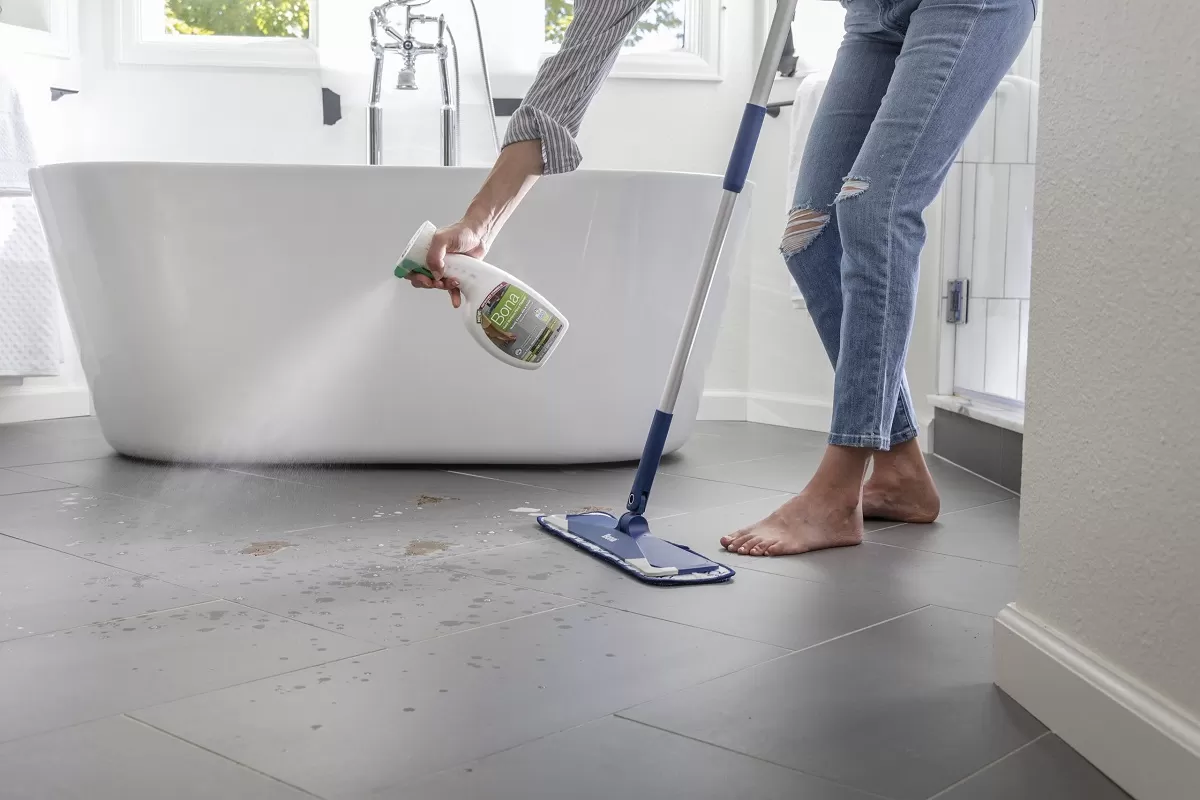Are stubborn food stains ruining the beauty of your tiles? Don’t worry; we’ve got the ultimate guide to help you restore your tiles to their former glory! Whether it’s greasy kitchen stains or dark grout lines, maintaining the shine of your tiles can be challenging without the right techniques. This blog provides actionable tips to remove tough stains and keep your floor tiles bright and spotless.
Common Issues with Food Stains on Tiles
Tile flooring, especially in kitchens, often suffers from food stains that settle deep into grout lines. Over time, dust, oil, and grease accumulate, making these stains bold and difficult to clean. Even regular cleaning can’t always prevent this buildup.
To tackle these challenges effectively, you need specialized solutions tailored to the type of tiles in your home. Let’s dive into the best methods to remove food stains from tile flooring and restore its shine.
5 Effective Tips to Remove Food Stains from Tiles
1. Identify Your Tile Type
Understanding your tile material is crucial. Tiles can be made of ceramic, porcelain, marble, granite, or other natural stones, and each requires specific cleaning methods.
- Man-Made Tiles: Ceramic and porcelain tiles are durable and easy to clean using standard floor cleaners.
- Natural Stone Tiles: Materials like marble and granite require extra care to avoid damage. Use gentle, non-acidic cleaners to preserve their texture and color.

2. Use Non-Abrasive Cleaners
Avoid harsh floor cleaners that may degrade the surface of your tiles over time. Instead, opt for non-abrasive solutions, especially for natural stone tiles.
- Steer clear of acidic cleaners containing vinegar, lemon, or baking soda. These can corrode natural stone surfaces.
- Avoid abrasive brushes or steel wool that may scratch and dull the tile finish.
3. Clean Tough Stains with Hydrogen Peroxide
Hydrogen peroxide is a game-changer for removing persistent food stains, including coffee, grease, or nail polish marks.
How to Use:
- Dilute 3% hydrogen peroxide with water.
- Dab the solution on the stain and let it sit for 1-2 hours.
- Rinse the area with clean water immediately after the stain disappears.

4. Use Bleach for Dark and Stubborn Stains
Bleach is highly effective for removing ink, coffee, and juice stains. However, it must be diluted before use.
How to Use:
- Clean the area with water to remove any residue.
- Apply a diluted bleach solution to the stain using a soft cloth or sponge.
- Rinse thoroughly with clean water to prevent discoloration.

5. Sparkle with Borax
Borax is not just for laundry; it’s a fantastic tile-cleaning agent.
How to Use:
- Mix borax with water to form a cleaning solution.
- Apply it to the stained area and scrub gently with a soft brush.
- Wipe the surface clean with a damp cloth for shiny, stain-free tiles.
Chemicals to Avoid When Cleaning Tiles
To prevent irreversible damage to your tiles, avoid using the following products:
- Acidic Agents: Vinegar, lemon, and similar cleaners can erode natural stone surfaces.
- Colored Cleaners: These may stain unglazed tiles.
- Wax-Based Products: These can create a slippery surface and leave behind yellow stains.
- Abrasive Scrubs: Materials like scouring powders or steel brushes may scratch and dull the tiles.
Conclusion
Maintaining clean and shiny tiles doesn’t have to be a headache! With these expert tips, you can easily remove stubborn food stains and preserve the beauty of your flooring.
For more tile care insights, visit the Armos Blog. As one of the leading ceramic tile manufacturers in Gujarat, Armos provides valuable tips and high-quality products to enhance your living spaces.
Transform your floors today with these proven cleaning tips and keep your tiles looking as good as new!



